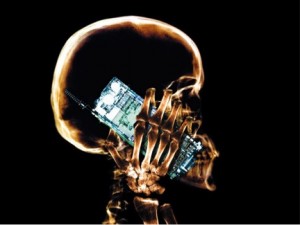By Dr Brinda Christopher
Sport and Exercise Medicine: The UK trainee perspective (A BJSM blog series)
Keeping up to date with new medical app releases can be time consuming and often unrewarding. This is partly due to poorly organized app stores and over zealous medical app websites written by generalists. For that reason I reviewed several apps from an SEM perspective and present the most notable.
*The views of the author do not necessarily represent the views of BJSM

BEST ANATOMY APP
Muscle Premium 2 by Visible Body
Muscle Premium 2 is a brilliant app with a seamless and intuitive interface. The visually impressive 3D cadaver can be viewed from any angle and dissected with ease. Learning has never been packaged so neatly before. It negates the need to spend hours reading reams of descriptive text. Its only downfall is that it will not run on ipad1, nor is it available for Android devices.
RECOMMENDED MUSCULOSKELETAL MRI / ANATOMY APP
Monster Anatomy Upper Limbs Monster Anatomy Lower Limbs by Monster Minds Media
Monster Anatomy is a detailed and accurate colour annotated MRI database. It delivers an optimal learning experience through a clean and logical interface. Intuitive touch navigation enables users to scroll through images of joints in 3 planes and limbs in 2, where flashing dots highlight structures. This is an indispensable tool for interpreting MRI of normal anatomy.
ONE TO WATCH
RealWorld Orthopaedics by Hyperexis
RealWorld Orthopaedics is a French-Canadian app where the index appears to have been lost in translation. If you are willing to overlook the initial navigational disarray, I am sure you will enjoy this app with a simple, but great concept of plain x-rays detailing multiple pathologies with colour coded overlays. It is a useful educational app and definitely one to watch for updates.
ANATOMY FOR iPAD1
Pocket Body by Emedia
Pocket Body is visually simple and clearly laid out with 8 preset layers of anatomy on a computer generated cadaver that rotate around a vertical axis. It almost feels like a no frills service, but the reliability of content and the detailed clinical context boxes make up for the lack of additional dynamic graphics. From a musculoskeletal viewpoint it lacks two important features: illustrations grouping muscles based on actions, and an orientation to view the plantar aspect of the foot in all its complexity.
USEFUL, BUT…
Muscle System Pro III Ankle and Foot Pro III by 3D4Medical.com
Muscle System Pro III on the other hand has a very sophisticated veneer, with a more flexible viewing interface and videos of muscle actions. There are however a number of flaws that have the potential to distract an unforgiving user: prolonged loading times of a few seconds, odd orientations of structures, omission of contributory muscles when describing muscle actions, and worst of all, some incorrect descriptions.
“Fibularis (Peroneus) Longus – This muscle originates from the middle third of posterior surface of tibia. It inserts into the bases of distal phalanges of 2nd-5th digits”.
These multiple oversights unfortunately challenge the integrity of 3D4Medical apps, despite being highly revered by Apple.
BOTTOM LINE
I am upgrading my tablet for the sole purpose of owning the Visual Body range because it has resuscitated my desire to learn anatomy. With its outstanding clarity of content and smooth navigation, this app sits in a league of its own.
**************************************************
Dr Brinda Christopher is a Registrar in Sports and Exercise Medicine based in London
Dr James Thing co-ordinates “Sport and Exercise Medicine: The UK trainee perspective” monthly blog series